
Simca was a French automaker, founded in November 1934 by Fiat S.p.A. and directed from July 1935 to May 1963 by Italian Henri Pigozzi. Simca was affiliated with Fiat and, after Simca bought Ford's French subsidiary, became increasingly controlled by Chrysler. In 1970, Simca became a brand of Chrysler's European business, ending its period as an independent company. Simca disappeared in 1978, when Chrysler divested its European operations to another French automaker, PSA Peugeot Citroën. PSA replaced the Simca brand with Talbot after a short period when some models were badged as Simca-Talbots.
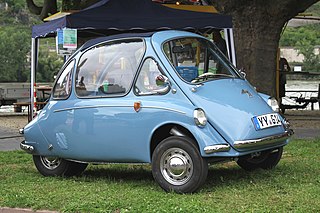
Microcar is a term often used for the smallest size of cars, with three or four wheels and often an engine smaller than 700 cc (43 cu in). Specific types of microcars include bubble cars, cycle cars, invacar, quadricycles and voiturettes. Microcars are often covered by separate regulations to normal cars, having relaxed requirements for registration and licensing.
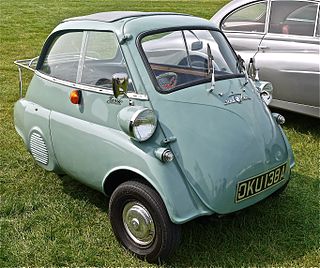
The Isetta is an Italian-designed microcar built under license in a number of different countries, including Argentina, Spain, Belgium, France, Brazil, Germany, and the United Kingdom. Because of its egg shape and bubble-like windows, it became known as a bubble car, a name also given to other similar vehicles.
The Amilcar was a French automobile manufactured from 1921 to 1940.

A cyclecar was a type of small, lightweight and inexpensive motorized car manufactured in Europe and the United States between 1910 and the early 1920s. The purpose of cyclecars was to fill a gap in the market between the motorcycle and the car. A key characteristic was that it could accommodate only two passengers sitting in tandem.
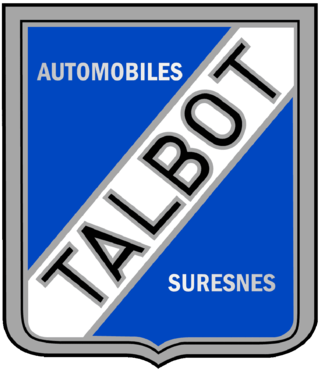
Talbot-Lago was a French automobile manufacturer based in Suresnes, Hauts de Seine, outside Paris. The company was owned and managed by Antonio Lago, an Italian engineer that acquired rights to the Talbot brand name after the demise of Darracq London's subsidiary Automobiles Talbot France in 1936.

Motobécane was a French manufacturer of bicycles, mopeds, motorcycles, and other small vehicles, established in 1923. "Motobécane" is a compound of "moto", short for motorcycle; "bécane" is slang for "bike."

The Renault Juvaquatre is a small family car / compact car automobile produced by the French manufacturer Renault between 1937 and 1960, although production stopped or slowed to a trickle during the war years. The Juvaquatre was produced as a sedan/saloon until 1948 when the plant switched its full attention to the new Renault 4CV. During the second half of 1952 the plant restarted production of the Juvaquatre sedans/saloons for a period of approximately five months.

The Messerschmitt KR175 microcar (1953–1955) was the first vehicle built by Messerschmitt under its 1952 agreement with Fritz Fend. In concept, although not in actual design, it was, in principle, a development of the Fend Flitzer invalid carriage. Approximately 15,000 were built before it was replaced by the Messerschmitt KR200 in 1956.

The 508 Balilla was a compact car designed and developed by Fiat in 1932. It was, effectively, the replacement of the Fiat 509, although production of the earlier model had ceased back in 1929. It had a three-speed transmission, seated four, and had a top speed of about 50 mph (80 km/h). It sold for 10,800 lire. About 113,000 were produced.

The Georges Irat was a French automobile manufactured by engine builder Georges Irat from 1921 to 1953.

Donnet was a French manufacturing company of the early twentieth century. Founded as Société des Établissements Donnet-Denhaut by Jérôme Donnet and François Denhaut at Neuilly-sur-Seine in 1914, the firm manufactured a highly successful line of patrol flying boats for the French Navy. The company became known simply as Donnet after designer Denhaut left it in 1919, but did not continue to build aircraft for long afterwards.
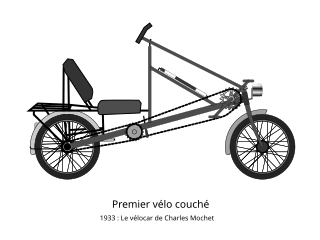
Velocar was the name given to velomobiles made in the 1930s and 1940s by Mochet et Cie of Puteaux, France and colloquially to the company's recumbent bicycles.

The Red Bug, later marketed as the Auto Red Bug were a vintage era cyclecar automobile manufactured by the Automotive Electric Service Corp. of North Bergen, New Jersey from 1924 to 1930. It is considered an early version of a microcar.

Georges Mochet began to produce cycle-cars at his, now-demolished, premises at 68, Rue Roque-de-Fillol at Puteaux in approximately 1946 and by about 1952 had progressed to more modern looking two seater micro-cars and powered two-wheelers. In 1958, with approximately 3,000 vehicles manufactured, production ended.

Sima Violet was a French manufacturer of cyclecars between 1924 and 1929.
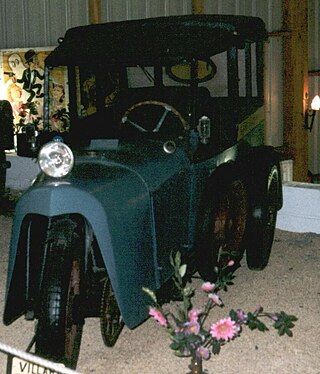
Villard was a French automobile manufacturer between 1925 and 1935.
Raymond Siran, Cyclecars D'Yrsan was a French manufacturer of automobiles in the cyclecar class.

The Société Bel Motors was a French microcar (automobile) manufacturer established at Les Sables-d'Olonne in 1976 by Jean Bellier. The cars used the name Véloto which reflected aspects of their light-weight design, notably in respect of the spoked wheels which would not have looked out of place on a bicycle.


















